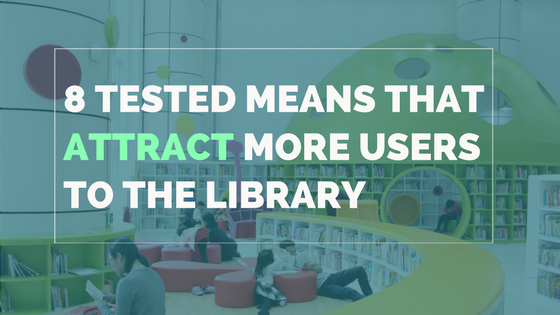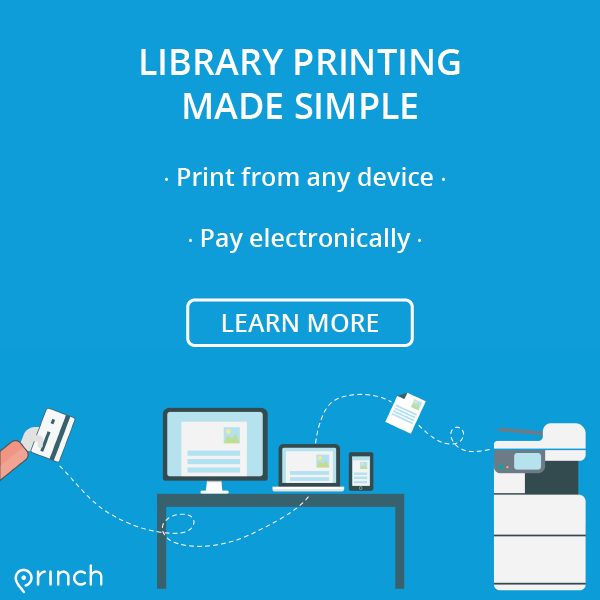Getting people to use the library’s services can be a real challenge now with all the new alternatives on how to spend your free time.
To combat this challenge, we started a series of posts last year with the aim to share relevant insights and perspectives from around the world about the many creative ways to attract more users to the public library. Here is a look at what we’ve seen around the world:
1. Partner with local organizations and companies to create a community hub
Sharing the public space of the library with another institution can be a fantastic way to cover more needs and attract different user segments. It is often easier to partner with a local public institution that shares the same set of values, but you can do even more by partnering with local private organizations.
Transform your #library into a community space where people gather to find information, play games, eat and drink, enjoy family time or participate in an exhibition. Click To TweetTransform your library into a community space where people gather to find information, play games, eat and drink, enjoy family time or relax reading a book or participating in an exhibition.
Read DOKK1’s case study here>>
Learn the key aspects of Princh! Watch our on-demand demos at your convenience and see what makes Princh such a simple solution. Watch our demos here.
2. Collaborate with other libraries from the region and offer a combined library service
Partnerships with local public or private organizations represent a fantastic way for the library to extend its services. But there is also the possibility to create partnerships with other libraries and offer a more attractive service to users.
Create #partnerships with other #libraries and offer a more attractive service to users. #librarylife #globallibrary Click To TweetThere are many benefits when implementing this kind of strategy, such as one single membership card for access to all the public libraries in the network, access to all the combined digital resources and the possibility to return the books to any branch in the network. There are also challenges when considering this kind of strategy but the trick is to combine local choice when it comes to stock, with regional or larger merging of other services.
#ShowUsYourLibraryCard @NSomLibraries #LibrariesDay Any from @BristolLibrary @Southgloslibs @bathnes @SomersetLib ? pic.twitter.com/jKbjsQuUSS
— LibrariesWest (@LibrariesWest) February 6, 2016
3. Create new spaces at the library
Besides the resources that they offer, libraries are more valued now for their spaces and the experiences that they create for the community. As the physical location becomes a living space for meetings and interaction, the libraries need to consider the dynamics at the library and create new spaces.
Besides the #resources that they offer, #libraries are more valued now for their #spaces and the experiences that they create for the #community. #publiclibraries Click To TweetThat can be ensured by adding a café on the perimeters and other zones where people can openly interact and exchange knowledge. A maker space is another good example of how libraries enable innovation and help people learn new skills while sharing their experiences and resources with others.
Read our post about the 4 spaces you can create at the library>>
4. Transform the vulnerable members of your community into the library’s most faithful users
Libraries are for everyone and all citizens should have access to knowledge. Even so, there a few members of the community that have particular needs and the library’s offerings for them are a bit limited or missing. To have a bigger impact on their lives and to actively guide them in their learning, a library can also implement new programs specifically for these target groups.
By helping refugees integrate into the local community, adapting the library’s resources to offer people with disabilities access to information and by helping the homeless integrate back into the society, the library can play a key role in their lives.
5. Find out who the non-users are and get them to the library
A high number of people have never been to the library or if they have been, they haven’t used most of the library’s services. There is a thin line between what differentiates a non-user from a user and the only way to find these differences is through research. Also, libraries need to adapt to these findings and make some changes in the services and the experience they offer.
There is a thin line between what differentiates a non-user from a user and the only way to find these differences is through research. #libraries #librarylife Click To TweetDonna Fletcher emphasized in our previous discussions that to promote their activities, libraries not only need signage, but also the staff needs to enjoy having patrons coming in and to be proactive by presenting all the library’s services: “Come here, let me show you this and this”.
Read Donna’s tips here>>
New library in South Shields, North England, targeted groups not using libraries. Result- 13,000 % increase in teens use #WLIC2017
— Louise LaHatte (@lahatte) August 24, 2017
6. Add innovative technologies at the library and get people interested to try them
When we talk about technology, libraries have been the first ones to get computers and other technologies and make them available to everyone. So, why not be a trendsetter in digital use and implement innovative technologies along with educating the public on how to use them?
Augmented reality, artificial intelligence, blockchain technology, 3D printers, robots, drones and mobile apps are just a few of the emerging technologies that can be used in libraries. Technology is a great way to create new and interesting services for the public in a time where the libraries have to adapt to the constantly changing needs of the users.
Learn about Lego WeDo Robots! Kids will work through the stages of building and be programming a floodgate that can be opened and closed using the motor. For grades 1-4. Main Library, 4-5:30 p.m., Tues., Feb. 6 @PLYMC pic.twitter.com/nck4wT2B4Z
— LibraryYoungstownOH (@PLYMC) February 5, 2018
7. Give the users the “keys” to the library so they can visit it whenever they feel like it
Librarians should lead the way in technology use among fellow residents but simultaneously, they need to gain more time for the most important activity – helping patrons.
#Librarians should lead the way in #technology use among fellow residents but simultaneously, they need to gain more time for the most important activity - helping patrons. Click To TweetLately, as libraries have extended their hours of availability, new forms of self-service solutions have emerged in the form of machines or software for different processes. Tools such as inventory readers, printing and copying, fines payment, reception of returned materials or even dusting off the books is facilitating the user flow at the library and the staffs’ daily activity. Also, self-service technology is the best solution to guarantee the availability out of normal opening hours and to make sure that the patrons can use the library’s resources as they would normally do.
Read Peterborough Libraries case study here>>
8. Use social media tools to create a voice for the library
Libraries offer a plethora of creative and interesting events, but a lot of times these events don’t reach people’s eyes or ears. Focusing on a few online tools is the best way to improve your library’s presence in the community and make people aware of its existence.
By using social media channels, patrons can stay connected to the library’s newsfeed and events all day and you spend no money on promotional materials. Streaming video and adding a few YouTube videos are a real trend these days and it is of great benefit to bring the library to the online community and make users aware of the events taking place at the library.
Podcasting and blogging can be used for introducing and presenting various topics to a broader audience and at the same time, you can create the needed content for social media distribution. Finally, newsletters and messaging apps are effective ways to make a more personal connection with patrons and maybe even answer more personal questions.
Focusing on a few online tools is the best way to improve your #library ’s presence in the community and make people aware of its existence. Click To TweetWhat techniques are you using to attract more users to the library? Let us know in the comments!
Find us on social media via Facebook or Twitter and read the latest developments in libraries from around the world.
Recent posts
Library Spaces & Clean Air: The Impact of Printing Choices on Indoor Environment
In this week's Princh Library Blog, guest writer Nina Grant talks about something that's always present, but rarely thought about; air, or [...]
Library Advocacy: How Individuals and Businesses Can Contribute to Library Resources
In this week’s Princh Library Blog post, guest writer Sam L. Bowman explores how both individuals and businesses can practice library advocacy [...]





[…] منبع: این نوشته ترجمه مطلبی با این عنوان است: ۸tested means that attract more users to the library […]
interesting note. In India, we also wish to attract more students to library
We’re a bunch of volunteers and starting a new scheme
in our community. Your website provided us with valuable information to
work on. You have performed an impressive job and our whole group will be grateful to you.
We’re happy to help